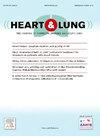The impact of intraosseous vs intravenous vascular access during resuscitation in out-of-hospital cardiac arrest: A comprehensive systematic review and meta-analysis
IF 2.6
4区 医学
Q2 CARDIAC & CARDIOVASCULAR SYSTEMS
引用次数: 0
Abstract
Background
Out-of-hospital cardiac arrest (OHCA) is a known cause of mortality worldwide, especially in Western countries. One of the various treatment strategies includes vascular access for the administration of life-saving drugs such as epinephrine and lidocaine. While intravenous (IV) access is traditionally performed, recent studies have evaluated the use of intraosseous (IO) access as an alternative.
Objective
To evaluate the efficacy of IV vs IO in improvement in patient outcomes with OHCA
Methods
A comprehensive literature search was conducted across five databases to identify studies comparing IV access to IO access in patients with OHCA. Statistical analysis via the ‘meta’ package and a random effects model was used and subgrouping was performed across adjusted and unadjusted values.
Results
Nineteen studies were included, with a total of 239,486 patients with OHCA (IV = 154,073; IO = 85,413). The incidence of return of spontaneous circulation (ROSC) was significantly lower in the IO group than in the IV group (OR = 0.71; 95 % CI: 0.65, 0.78; p < 0.01), which was consistent across unadjusted and adjusted values. Additionally, the IO group had lower survival rates at admission, at discharge and at 30 days. The IO group had poorer neurological outcomes (OR = 0.64; 95 % CI: 0.49, 0.84; p < 0.01).
Conclusion
Our meta-analysis revealed the superiority of intravenous vascular access over intraosseous access in adult patients suffering from OHCA. However, further randomized trials are needed to confirm these results.
院外心脏骤停复苏期间骨内与静脉血管通路的影响:一项全面的系统回顾和荟萃分析
院外心脏骤停(OHCA)是世界范围内已知的死亡原因,特别是在西方国家。多种治疗策略之一包括血管通路,以便给药救命药物,如肾上腺素和利多卡因。虽然静脉(IV)通道是传统的,但最近的研究已经评估了使用骨内(IO)通道作为一种替代方法。目的评价静脉注射与内注射在改善OHCA患者预后方面的效果。我们对5个数据库进行了全面的文献检索,以确定对OHCA患者静脉注射与内注射进行比较的研究。通过“meta”包和随机效应模型进行统计分析,并对调整值和未调整值进行分组。结果纳入19项研究,共纳入239,486例OHCA患者(IV = 154,073;IO = 85,413)。静脉注射组自发性循环恢复(ROSC)发生率明显低于静脉注射组(OR = 0.71;95% ci: 0.65, 0.78;p & lt;0.01),在未调整值和调整值之间一致。此外,IO组入院时、出院时和30天生存率较低。IO组神经系统预后较差(OR = 0.64;95% ci: 0.49, 0.84;p & lt;0.01)。结论:我们的荟萃分析显示,在成年OHCA患者中,静脉血管通路优于骨内通路。然而,需要进一步的随机试验来证实这些结果。
本文章由计算机程序翻译,如有差异,请以英文原文为准。
求助全文
约1分钟内获得全文
求助全文
来源期刊

Heart & Lung
医学-呼吸系统
CiteScore
4.60
自引率
3.60%
发文量
184
审稿时长
35 days
期刊介绍:
Heart & Lung: The Journal of Cardiopulmonary and Acute Care, the official publication of The American Association of Heart Failure Nurses, presents original, peer-reviewed articles on techniques, advances, investigations, and observations related to the care of patients with acute and critical illness and patients with chronic cardiac or pulmonary disorders.
The Journal''s acute care articles focus on the care of hospitalized patients, including those in the critical and acute care settings. Because most patients who are hospitalized in acute and critical care settings have chronic conditions, we are also interested in the chronically critically ill, the care of patients with chronic cardiopulmonary disorders, their rehabilitation, and disease prevention. The Journal''s heart failure articles focus on all aspects of the care of patients with this condition. Manuscripts that are relevant to populations across the human lifespan are welcome.
 求助内容:
求助内容: 应助结果提醒方式:
应助结果提醒方式:


